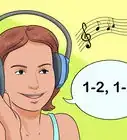This article was co-authored by Michael Noble, PhD. Michael Noble is a professional concert pianist who received his PhD in Piano Performance from the Yale School of Music. He is a previous contemporary music fellow of the Belgian American Educational Foundation and has performed at Carnegie Hall and at other venues across the United States, Europe, and Asia.
There are 7 references cited in this article, which can be found at the bottom of the page.
wikiHow marks an article as reader-approved once it receives enough positive feedback. In this case, 82% of readers who voted found the article helpful, earning it our reader-approved status.
This article has been viewed 262,992 times.
In music, a key signature technically refers to a set of sharps and flats based a root note. Practically speaking, keys have a major effect on the mood and tone of a piece of music. As a musician, knowledge of music keys is very important, especially if you are wanting to jam with other musicians. Finding a key can be very difficult, especially if you don't have prior training in music theory. However, whether you're working out a key using notation or trying to figure it out by ear, there are ways a new musician can figure out a key with some basic knowledge of theory.
Steps
Figuring Out a Key With Notation
-
1Look for the tonic note.[1] The tonic in a key signature refers to the root note that the rest of the scale is based on. Tonic is important because any given set of sharps and flats could correspond either to a Major or Minor key. The first note of a tonic note is often (but not always) the tonic note. If there is a chord that the rest of the composition appears built around, the tonic note is probably the root note of that chord.
- The tonic note in C Major is C, for instance.
- This is especially important if there are no flats or sharps in the notation. Purely natural notation will either be keyed in C Major or A Minor. Look for patterns building around one of these two notes.[2]
-
2Spot the chords in use. Musical keys have chords that suit them. Look at the notation and identify the chords in use. Next, you can use a chord map to associate the chords with a key. Chord maps are a dictionary of the chords that apply to a given key. Identifying three or so chords should give you enough ammunition to figure out the key with a chord map.
- Chord maps outline the chords of each key clearly.[3] For example, the chords in the key of C are: C Major, D Minor, E Minor, F Major, G Major, and A Minor.
Advertisement -
3Refer to the Circle of Fifths. The Circle of Fifths is a shorthand way of remembering the sharps and flats in a given Major key.[4] In many ways, it's the most important tool in Western music theory. To know how many sharps there are in a key, count the number of spaces between a note clockwise from C. C is at the top of the Circle of Fifths, making it easy to count. Take the number of sharps and count it clockwise. The pace you stop at will be your Major key.
- For flats, do the opposite with E, located at the bottom of the Circle. Count counter-clockwise from E based on how many flats are in your key signature.
- The Circle of Fifths is designed for Major keys. A Minor key will use the same accidentals, except the tonic note will be three steps down from the Major.
The Circle of Fifths tells you the number of sharps or flats, but not where they are. Use this mnemonic to remember them:
Sharps: Father Charles Goes Down And Ends Battle.
Flats use the same phrase backward, since Charles gets "flattened" in battle: Battle Ends And Down Goes Charles Father.
For example, since D major has two sharps, you read the first two words: Father Charles → the two sharps are F♯ and C♯.
-
4Identify the final note in a song.[5] In many cases, the final note in a song will bring the composition back to its root tonic note. Many composers will end with a tonic note to give their work a sense of completion. Cross-reference the final note with the given sharps and flats and see if the accidentals line up with the note in question.
- If the final note is a chord, look for the "root note", or lowest in the chord.
- This technique may not work if the music you're trying to decipher is experimental or avant-garde.
-
5Play a bit of the song. Although a chord map and list of accidentals should give you all the answers you need, it nonetheless helps to play out the song. If there was any doubt whether a piece if Major or Minor, those confusions should be laid to rest when you hear the music aloud.
- Major keys are so-called because they sound "happy". Minor keys sound naturally sad in contrast.
Figuring Out a Key by Ear
-
1Listen to the mood of the music. The applied effect of major and minor keys is the tone of a piece. Generally speaking, major keys sound happy, while minor keys are melancholic or sad. Listen to the music and keep your ear out for the emotions at work in the piece. In the majority of cases, it should be easy to hear whether a piece is major or minor. Once you have that basis down, you'll have an easier time of specifying the key to a root note.
- Major keys are typically purer than minor. If there is a mixture of happy and sad-sounding chords in a piece, chances are high it is a minor key.
-
2Hum to find a root note. You can find a key by humming around for the root note. Unless the piece of music you're working with is incredibly complex, there should be a tone you can hum that matches all of the chords in a song. If you find this, hold onto the note. Record it on a voice recorder if you need to.
- The Beatles' classic "Yesterday" is an interesting example due to its sophisticated chord progression. Play around by humming a few different notes, and try to hum the note as long as possible. If you find yourself stumped, hum the F note. Although certain notes may fit better than others, Yesterday is in the key of F Major.[6]
- You may have to try out a few different notes before you hear one that sounds synchronous with the music.
-
3Play out the root note on an instrument. If you have an instrument, you can take the note you hummed out and apply it to an instrument. If you have a grasp of what the hummed root note was, you shouldn't have any trouble finding it on the instrument. Once you play a note on the instrument that matches your humming, you'll have be able to clearly identify what note it is based on standard notation.
- Play along to The Beatles' Yesterday using one note. If you play F, you'll find the note backs up the chords used in the song.
- There are tuner apps online and on your phone that will tell you what note it is you're singing.
-
4Train your ear. Figuring out the key for a given piece of music becomes a lot easier if you can identify notes with your ear and develop perfect pitch. Depending on your musical knowledge, this may be very tricky, but it can be done over the course of time and patience.
- One technique to help you learn is note replication. Using a tuner (you can use free online tuners as well), listen to a pitch and read up what note it is. Think up the musical note in your head, and try to replicate it with your voice. Once you've sung it, play the tuner note again and see how close you got to the true pitch. Do this for all of the notes.[7]
Practicing Key Identification
-
1Identify keys in popular songs. Popular songs are a great place to start if you want to train your knowledge of keys. Popular standards (like classical pieces or songs by The Beatles) are great because their keys are easier to decipher than complex or obscure music. Notation for these songs are also easy to find online, and the key signatures are easy to look up when you want to see the answers.
- Sites like Key Finder are specifically around for people to research the key signatures of famous songs.
-
2Practice with major and minor-keyed songs. If you want to perfect your key identification, you should be working with songs in both the main key categories. Major and minor-keyed songs operate in different ways, and you'll have to key your ear out for different patterns between the two.
- For major-keyed songs, The Beatles' Yesterday and the Village Peoples' YMCA are great exercises. Yesterday in particular is a good exercise because of how deceptively tricky it is.
- For minor-keyed songs, try Nirvana's Smells like Teen Spirit and Michael Jackson's Beat It. Both of these songs have been researched extensively already, and it won't be difficult to find info on these pieces if you need it.
-
3Work out the keys by ear. Listen to each of the listed songs and try to hum out a note that works throughout the piece. Even if you know the key of the song beforehand, try humming a few different notes and be mindful of which ones sound better than others.
- Song bridges make something of an exception. It's a common pop songwriting convention to bring a section of a song into a different key. This convention is used to refresh the song towards the end.
-
4Look up the notation for your exercise songs. Notation will give you a visual equivalent to the music. Even simple pop songs can be notated with theory. Some music notation will list the key for you at the top of the page as well. Even if the answer is spoiled for you, it's helpful to know the proper key and look for evidence in the notation that proves that answer.
- Modern pop and rock songs don't tend to have sophisticated notation. You may only find chord progressions and basic melodic notation for pop songs. Even so, this information should give you enough information to deduce the proper key.[8]
-
5Listen to song versions in reworked keys. For examples of the difference between a Major and Minor key, listen to some reworked versions of popular songs. Songs like The Village People's YMCA are completely different when brought into a Minor key.[9]
Expert Q&A
-
QuestionHow do I know which key I sing in?
 Michael Noble, PhDMichael Noble is a professional concert pianist who received his PhD in Piano Performance from the Yale School of Music. He is a previous contemporary music fellow of the Belgian American Educational Foundation and has performed at Carnegie Hall and at other venues across the United States, Europe, and Asia.
Michael Noble, PhDMichael Noble is a professional concert pianist who received his PhD in Piano Performance from the Yale School of Music. He is a previous contemporary music fellow of the Belgian American Educational Foundation and has performed at Carnegie Hall and at other venues across the United States, Europe, and Asia.
Professional Pianist If you're trying to determine the key of a piece of sheet music, find the last chord or note. Most of the time, that will be the key.
If you're trying to determine the key of a piece of sheet music, find the last chord or note. Most of the time, that will be the key. -
QuestionIf a song is in the key of E, and I lower it 2 steps, what key is it in?
 Community AnswerIf you are lowering it two tones down, it would be in the key of C, but if you're lowering it two semi-tones down, it would be D.
Community AnswerIf you are lowering it two tones down, it would be in the key of C, but if you're lowering it two semi-tones down, it would be D. -
QuestionWhat does perfect pitch mean?
 Community AnswerIt means you can name a note by just hearing it played. If someone plays the note C, for example, you would be able to identify the note without looking at the piano. This makes it easier for you to identify the key of a piece by ear.
Community AnswerIt means you can name a note by just hearing it played. If someone plays the note C, for example, you would be able to identify the note without looking at the piano. This makes it easier for you to identify the key of a piece by ear.
Warnings
- Music isn't all about the theory. Theory is important, but it will only take you so far towards becoming a great musician.⧼thumbs_response⧽
References
- ↑ http://www.ars-nova.com/Theory%20Q&A/Q90.html
- ↑ http://www.ars-nova.com/Theory%20Q&A/Q90.html
- ↑ http://www.guitar-chord.org/key-and-chord-chart.html
- ↑ http://www.dolmetsch.com/musictheory9.htm
- ↑ http://www.ars-nova.com/Theory%20Q&A/Q90.html
- ↑ http://www.songkeyfinder.com/songs/351/The+Beatles+Yesterday
- ↑ http://makingmusicmag.com/how-to-train-your-ear-for-perfect-pitch/
- ↑ http://www.e-chords.com/chords/michael-jackson/beat-it
- ↑ http://noisey.vice.com/en_uk/read/youneedtohearthis-these-majorvsminor-key-versions-of-popular-songs-are-amazing








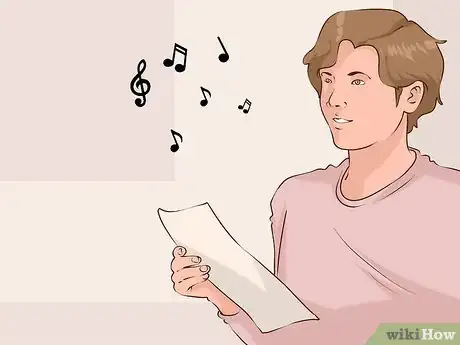



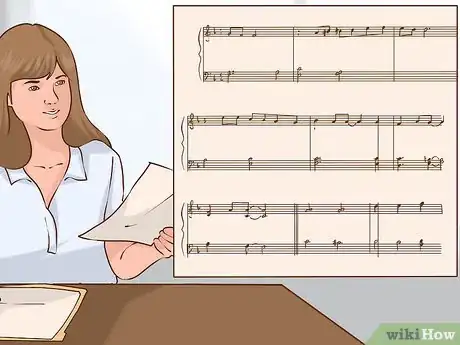


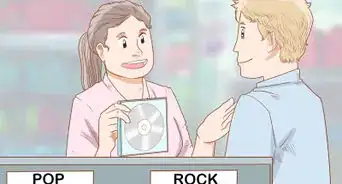
-of-a-Song-Step-9.webp)
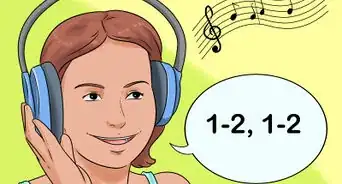
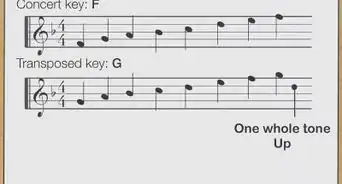



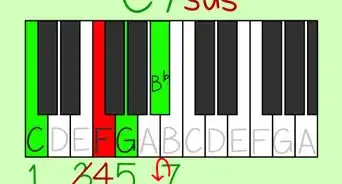
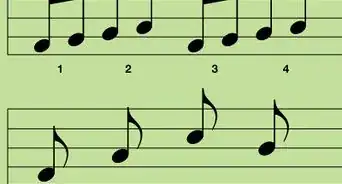
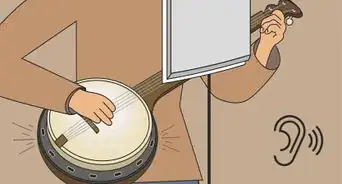
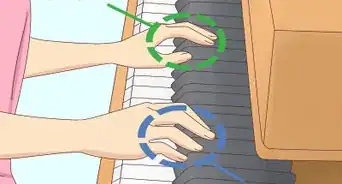
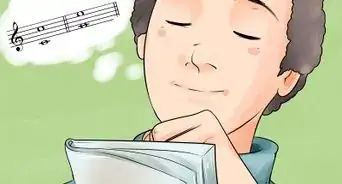













-of-a-Song-Step-9.webp)
